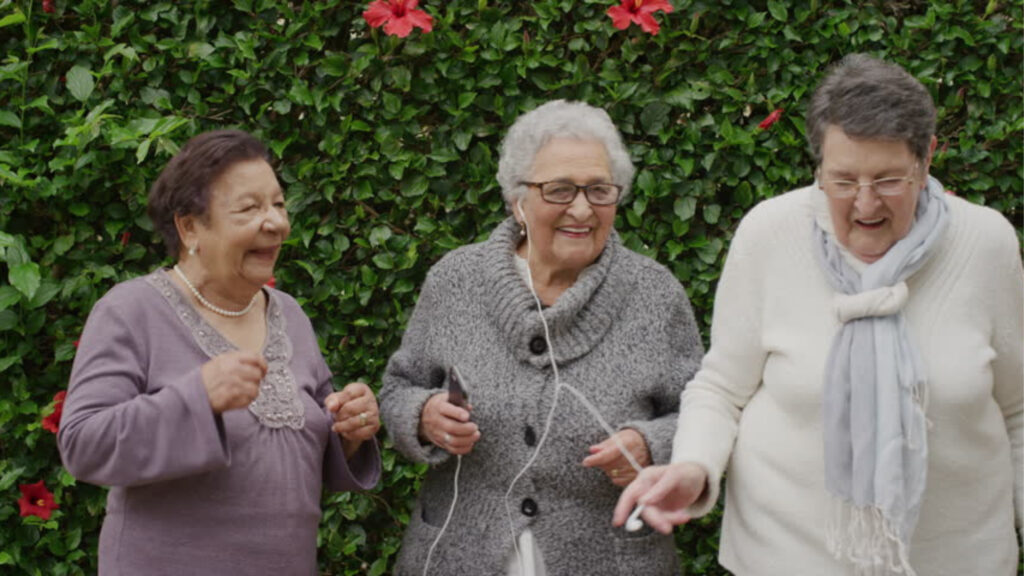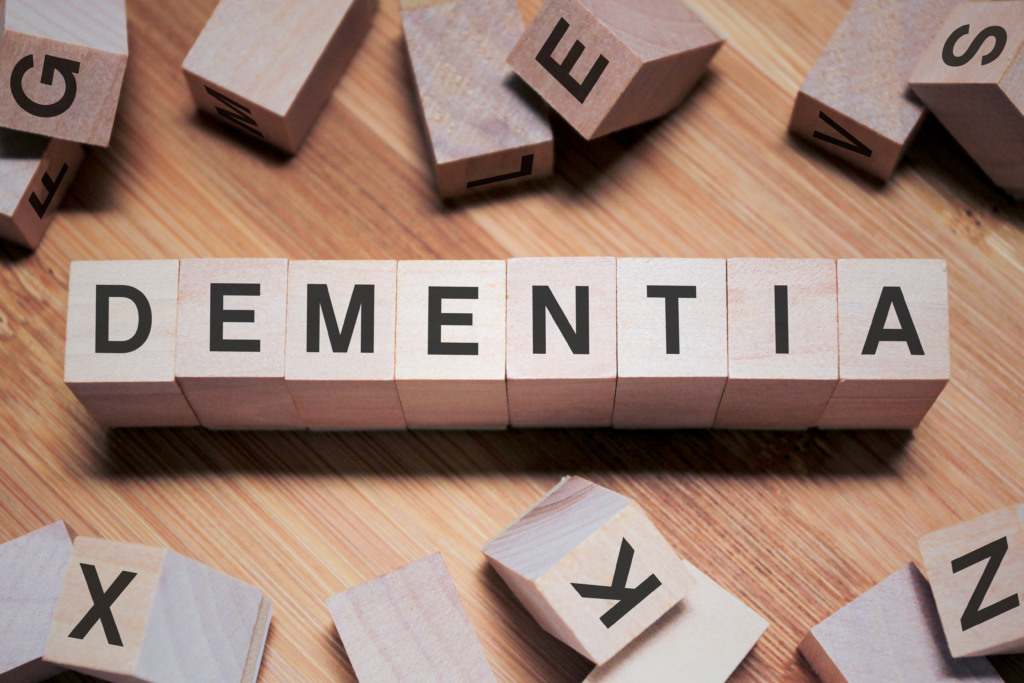
Sundown syndrome, also known as sundowning, is a common symptom in individuals with dementia and Alzheimer’s disease. As daylight fades, these individuals may experience increased agitation, confusion, and anxiety. Learn about effective strategies to manage sundown syndrome and provide a comforting environment for your loved one.
1. Maintain a Consistent Routine
Establishing a consistent daily routine is crucial in minimizing disorientation and anxiety in individuals with sundown syndrome. A well-structured routine can provide stability, familiarity, and a sense of control for the person affected. Consider implementing the following strategies:
- Regular wake-up times: Encourage your loved one to wake up at the same time each day to set the tone for the day ahead. Consistent wake-up times can help regulate the body’s internal clock, making it easier to adapt to the day’s events.
- Consistent meal times: Plan regular meal times, ensuring they are evenly spaced throughout the day. Proper nutrition is vital for cognitive function, and maintaining a routine can help prevent disorientation or agitation related to hunger or low blood sugar levels.
- Scheduled activities: Incorporate daily activities that engage the individual, such as physical exercise, cognitive stimulation, or social interaction. Plan these activities during their most alert and energetic times of the day, and try to avoid overstimulation as evening approaches.
- Rest and relaxation: Schedule periods of rest and relaxation throughout the day to prevent fatigue and overstimulation. Offer calming activities such as reading, listening to music, or gentle stretching during these times.
- Gradual evening transition: As evening approaches, create a calm and soothing environment by dimming the lights, reducing noise, and engaging in relaxing activities. This can help signal to the individual that it’s time to wind down and prepare for sleep.
- Consistent bedtime routine: Establish a regular bedtime routine that includes calming activities such as a warm bath, gentle massage, or reading. This can help signal the brain that it’s time for sleep and create a sense of comfort and familiarity.
2. Create a Calm Atmosphere
During the evening hours, create a calming atmosphere by reducing noise, dimming lights, and avoiding overstimulation. Soft music and gentle touch can provide comfort and reassurance. Aromatherapy has been found to offer several potential benefits for dementia patients, including:
- Reduced agitation and anxiety: Some essential oils, like lavender and chamomile, are known for their calming and soothing properties. Aromatherapy can help alleviate symptoms of agitation, anxiety, and restlessness, which are common in people with dementia.
- Improved mood and emotional well-being: Certain essential oils, such as citrus oils like orange and lemon, have uplifting properties that may help improve mood and enhance emotional well-being in dementia patients.
- Enhanced cognitive function: Some studies suggest that specific essential oils, like rosemary and peppermint, may have positive effects on cognitive function, attention, and memory in individuals with dementia.
- Better sleep quality: Aromatherapy can help promote relaxation and improve sleep quality in dementia patients. Essential oils like lavender, ylang-ylang, and cedarwood are known for their sedative properties and can be used to create a more restful sleep environment.
- Non-pharmacological approach: Aromatherapy provides a natural, non-invasive, and non-pharmacological approach to manage dementia symptoms. This can be particularly beneficial for patients who may not tolerate or respond well to medications.
- Personalized care: Aromatherapy can be customized to meet the specific needs and preferences of individual patients, allowing caregivers to tailor the therapy to suit each person’s unique situation.
3. Encourage Daytime Activities
Engaging in meaningful daytime activities plays a crucial role in regulating sleep patterns and reducing nighttime restlessness for individuals with sundown syndrome. Offering a variety of stimulating activities can contribute to overall well-being and cognitive health. Consider incorporating the following types of activities:
- Physical exercise: Encourage regular physical activity, such as walking, stretching, or chair exercises, to promote overall health and reduce restlessness. Physical exercise can help release built-up energy, improve circulation, and enhance mood by releasing endorphins.
- Mental stimulation: Provide opportunities for cognitive stimulation with activities such as puzzles, games, or reminiscence therapy. Mental engagement can help maintain cognitive function, support memory retention, and provide a sense of accomplishment.
- Social interaction: Facilitate social connections through group activities or one-on-one interactions with family members, friends, or caregivers. Socialization can provide emotional support, reduce feelings of isolation, and enhance overall well-being.
- Creative expression: Offer outlets for creative expression, such as painting, drawing, or music therapy. Engaging in creative activities can foster a sense of purpose and achievement, while also serving as a calming and therapeutic outlet.
- Exposure to natural sunlight: Encourage spending time outdoors or near windows during daylight hours. Exposure to natural sunlight can help regulate sleep-wake cycles, improve mood, and increase the production of vitamin D, which supports bone health and cognitive function.
- Tailor activities to individual preferences: It’s essential to consider the person’s interests, abilities, and past experiences when planning activities. Personalizing activities to their preferences can increase motivation and engagement.
4. Manage Sleep Issues
Poor sleep quality and sleep disturbances can significantly exacerbate sundown syndrome, making it crucial to address these issues. Creating a sleep-conducive environment and adopting healthy sleep habits can promote restful and rejuvenating sleep. Consider implementing the following strategies to manage sleep issues:
- Optimize the sleep environment: Keep the bedroom cool, dark, and quiet to facilitate relaxation and sleep. Use blackout curtains, comfortable bedding, and proper room temperature to create an optimal sleep setting.
- Establish a bedtime routine: Develop a consistent bedtime routine that includes calming activities such as reading, listening to soft music, or engaging in relaxation techniques like deep breathing or meditation. This routine signals to the body and mind that it’s time to wind down and prepare for sleep.
- Avoid stimulating activities before bedtime: Limit exposure to screens, caffeine, and other stimulating activities in the evening hours. Engage in more relaxing pursuits that help promote a sense of calm and prepare the individual for restful sleep.
- Consider using a white noise machine: White noise machines can help drown out disruptive sounds, providing a soothing background noise that promotes relaxation and sleep. Alternatively, you can use a fan or a soft music playlist to achieve a similar effect.
- Monitor medications and medical conditions: Consult with healthcare professionals to ensure that medications or underlying medical conditions are not contributing to sleep disturbances. Adjusting medications or addressing medical concerns may improve sleep quality.
- Promote relaxation techniques: Encourage relaxation techniques, such as progressive muscle relaxation, guided imagery, or aromatherapy, to help ease anxiety and tension before bedtime. These techniques can facilitate a smoother transition to sleep.
- Encourage daytime napping if needed: Short naps during the day can help alleviate fatigue without disrupting nighttime sleep. Aim for naps that are no longer than 30 minutes and avoid napping too close to bedtime.
5. Limit Caffeine and Sugar Intake
Caffeine and sugar can contribute to increased anxiety, agitation, and sleep disturbances in individuals with sundown syndrome. To minimize the impact of these substances, it’s essential to monitor and limit their consumption, especially in the afternoon and evening. Focus on providing balanced, nutritious meals by implementing the following strategies:
- Monitor caffeine consumption: Keep track of all sources of caffeine in your loved one’s diet, including coffee, tea, chocolate, and certain medications. Aim to limit or eliminate caffeine intake in the afternoon and evening to avoid interference with sleep patterns.
- Reduce sugar intake: Excessive sugar consumption can lead to energy crashes, mood swings, and sleep disturbances. Limit the intake of sugary snacks, desserts, and beverages, and opt for healthier alternatives like fresh fruit or yogurt.
- Provide balanced meals: Ensure that your loved one’s meals include a combination of whole grains, lean protein, fresh fruits, and vegetables. This balanced approach provides essential nutrients and helps maintain stable blood sugar levels, which can positively affect mood and overall well-being.
- Encourage regular meal times: Establish consistent meal times to help maintain a routine and promote healthy digestion. This can also help regulate appetite and prevent overeating or excessive snacking, which can contribute to sleep disturbances.
- Consider healthy snacks: Offer nutritious and low-sugar snacks between meals to help manage hunger and maintain energy levels. Examples include nuts, cheese, whole grain crackers, or sliced vegetables with hummus.
- Stay hydrated: Dehydration can negatively impact mood, energy levels, and cognitive function. Encourage your loved one to drink water throughout the day and limit the intake of sugary or caffeinated beverages.
6. Provide Reassurance
When your loved one is experiencing the symptoms of sundown syndrome, it’s essential to offer reassurance, understanding, and support. Adopting empathetic communication techniques can help alleviate confusion, distress, and agitation. Here are some ways to provide reassurance to your loved one:
- Speak calmly and clearly: Use a gentle tone of voice, speak slowly, and maintain eye contact. This approach can help convey a sense of security and trust, making it easier for your loved one to understand and process the information.
- Validate their feelings: Acknowledge and validate the emotions your loved one is experiencing, even if they seem irrational or misplaced. Validation helps create an environment of understanding and empathy, reducing feelings of isolation and frustration.
- Use simple language: When communicating with your loved one, use simple and concise language. Avoid using complex sentences or abstract concepts, as these can increase confusion and agitation.
- Offer comfort through touch: When appropriate, use touch as a form of reassurance. Holding your loved one’s hand, offering a gentle pat on the back, or providing a comforting hug can help alleviate anxiety and create a sense of connection.
- Implement dementia-specific communication techniques: Familiarize yourself with communication strategies specifically designed for individuals with dementia. Techniques such as reminiscence therapy, reality orientation, or the use of visual cues can help facilitate more effective communication and reduce misunderstandings.
- Redirect and distract: If your loved one becomes agitated or fixated on a particular issue, try redirecting their attention to a more calming or enjoyable activity. This technique can help defuse tension and promote relaxation.
- Create a soothing environment: Make adjustments to the living environment to reduce potential triggers for agitation. Soft lighting, calming music, and familiar items or photographs can help create a sense of familiarity and comfort.
7. Consider Professional Assistance
If your loved one’s sundown syndrome becomes increasingly challenging to manage, it may be time to consider seeking professional assistance. Assisted living communities and memory care facilities offer specialized care and support for individuals with dementia, Alzheimer’s disease, and other cognitive impairments. These communities provide various advantages to ensure your loved one receives appropriate care tailored to their needs:
- Individualized care plans: Assisted living communities and memory care facilities develop personalized care plans for each resident, addressing their specific needs, preferences, and abilities. This approach ensures your loved one receives the most suitable care and support, enhancing their quality of life.
- Safe and secure environments: These communities are designed with the safety and well-being of residents in mind. Features such as secured entries, alarmed doors, and enclosed outdoor spaces help prevent wandering and reduce the risk of accidents or injuries.
- Specially trained staff: Staff members at assisted living and memory care facilities receive specialized training in dementia care, equipping them with the skills and knowledge necessary to provide effective support and manage challenging behaviors, such as sundown syndrome.
- Structured routines and activities: Assisted living communities and memory care facilities offer structured daily routines and activities designed to engage and stimulate residents. These programs encourage social interaction, mental stimulation, and physical activity, which can help reduce sundown syndrome symptoms.
- Access to support services: Professional care communities often provide access to support services such as occupational therapy, physical therapy, and counseling. These services can help residents maintain their abilities, cope with the challenges of dementia, and address any underlying issues that may contribute to sundown syndrome.
- Family support and education: Assisted living and memory care facilities often provide support and education for families, helping them understand dementia and learn effective caregiving strategies. This support can be invaluable in navigating the challenges of caring for a loved one with dementia.
Sundown syndrome can present significant challenges for individuals with dementia and their caregivers, but by implementing the above strategies, you can help manage symptoms and create a more comfortable and supportive environment for your loved one. Establishing consistent routines, encouraging daytime activities, managing sleep issues, and providing reassurance are just a few ways to address sundown syndrome effectively.
If you’re considering assisted living or memory care for your loved one, let our expert team at Valley Senior Advisors guide you through the decision-making process. We understand the complexities of finding the right care options for your loved one and are here to help:
- Personalized support: We take the time to understand your loved one’s unique needs, preferences, and situation, ensuring that we recommend the best care options tailored to their requirements.
- Expert knowledge: Our team has extensive knowledge of the available assisted living and memory care facilities in your area, allowing us to provide valuable insights and guidance throughout the selection process.
- Seamless transition: We work closely with you and the care facilities to ensure a smooth and stress-free transition for your loved one, providing support every step of the way.
Don’t navigate the complexities of finding appropriate care for your loved one on your own. Contact Valley Senior Advisors today at (480) 331-8855 for personalized support, expert guidance, and a seamless transition to their new home, where they will receive the care and attention they deserve.



















